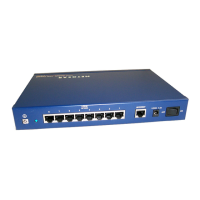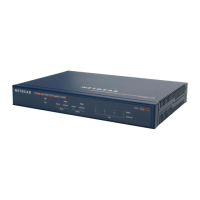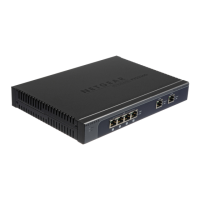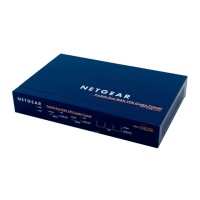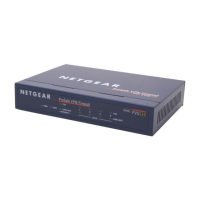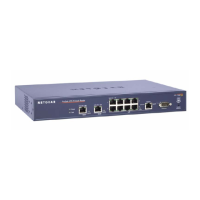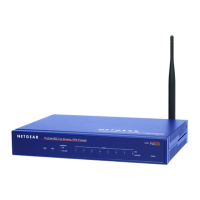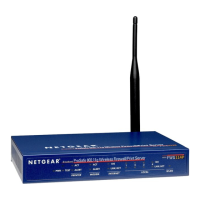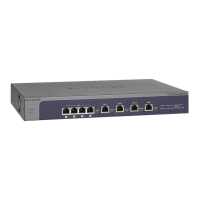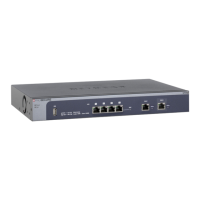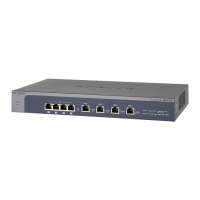Virtual Private Networking Using IPv4 IPSec and L2TP Connections
210
ProSafe Wireless-N 8-Port Gigabit VPN Firewall FVS318N
7. Specify the settings that are explained in the following table.
8. Click Apply to
use the new settings immediately, and click Save to keep the settings for
future use.
Create the Mode Config IPSec Configuration (Phase 2 Settings)
Note: On the wireless VPN firewall, the IPSec configuration (phase 2
settings) is referred to as the IKE settings.
To create an IPSec configuration:
1. In the
tree list pane of the Configuration Panel screen, right-click the GW_ModeConfig
authentication phase name, and then select New Phase 2.
2. Change
the name of the IPSec configuration (the default is Tunnel):
a. Right-click
the IPSec configuration name.
b. Select Rename.
c. Ty
pe Tunnel_ModeConfig.
d. Click anywhere in the tree
list pane.
Table 52. VPN client advanced authentication settings (Mode Config)
Setting Description
Advanced features
Mode Config Select this check box to enable Mode Config.
Aggressive Mode Select this check box to enable aggressive mode as the mode of negotiation with
the wirel
ess VPN firewall.
NAT-T Select Automatic from the drop-down list to enable the VPN client and wireless
VPN firewall to negotiate NAT-T.
Local and Remote ID
Local ID As the type of ID, select DNS
from the Local ID drop-down list because you
specified FQDN in the wireless VPN firewall configuration.
As the value of the ID, enter cl
ient.com as the local ID for the VPN client.
Note: The remote ID on the wireless VPN firewall is the local ID on the VPN
clie
nt.
Remote ID As the type of ID, select DNS
from the Remote ID drop-down list because you
specified an FQDN in the wireless VPN firewall configuration.
As the value of the ID, enter ro
uter.com as the remote ID for the wireless VPN
firewall.
Note: The local ID on the wireless VPN firewall is
the remote ID on the VPN
client.
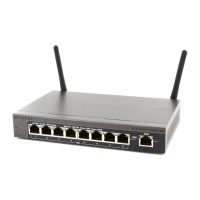
